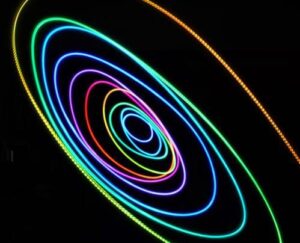Fiber lasers have received much attention because of their qualities, benefits in use and a number of applications in various spheres. A range of the different wavelengths allows specialists to use fiber laser systems in factory environments for welding, cutting, texturing, etc. At the same time, the ultraprecise fiber lasers are applied in spheres where accuracy is a crucial feature – for example, in medicine, micromachining or scientific research.
Table of Contents
History of the fiber lasers’ development
The history of the fiber lasers’ evolution began with the invention of the first laser in 1961. First lasers didn’t achieve great of popularity from the very beginning, as they were complex and quite expensive. Fiber lasers got serious commercial applications only in the 1990s. The main cause is the gradual development of the fiber laser technology.
Modern improvements
Today, fiber laser technology is still improving, creating more powerful and efficient fiber lasers. Specialists are working on the lasers’ accuracy, lasers’ environmental impact, etc. More improvements were made when the outputs of multiple fiber lasers were combined. This modification has led to the improvement of the power and range of the laser beam.
Medical applications of ultrafast fiber lasers
When it comes to fiber lasers’ applications, ultrafast fiber laser systems are applied in various spheres. However, there are fields where fiber lasers are irreplaceable, for instance, in medicine.
Contribution to healthcare
Fiber laser technology has made a great contribution to the growth of medicine. Fiber lasers are applied in fields ranging from therapy and ending with surgery. Thanks to the tremendous demand for healthcare, fiber laser technology has grown into a mature industry by making new innovations. Fiber lasers have rapidly adapted to the medical procedures’ evolution, considering their high-power densities in sterile noncontact processes and providing cauterization.
Fiber lasers in photodynamic therapy
PDT or Photodynamic Therapy is a treatment where the fiber laser light is used to destroy abnormal cells. From the very beginning, this technology was specially developed for the cancerous and precancerous cells in oncology. Moreover, it was suitable just for the particular cancer types.
Further development of PDT
The further development of PDT demonstrated that it can also be effective for general oncology and other kinds of cancer. This method is more convenient for the patients because it represents a noninvasive or minimal invasive alternative technique and provides less time for the recovery.
Fiber lasers in dentistry
The other medical field where fiber lasers have been applied over recent decades is dentistry. Fiber laser systems have proved to provide a fast and easy way of treatment. Fiber lasers have offered a significant reduction of the pain during or after the treatment for the patients. Moreover, the time required for the procedure itself and for the recovery period has got shorter.
Fiber lasers’ requirements in this sphere can be diverse starting from the essential laser characteristics like the wavelength and ending with physical qualities like size.
Fiber lasers for optical coherence tomography
From the very beginning, optical coherence tomography was developed particularly for ophthalmology. Meanwhile, today optical coherence tomography has found many applications in medicine.
Diagnostic capabilities
The laser beam light is applied to take the cross-section images for diagnostics in clinics. The good resolution of the image helps in finding tiny infections at a few millimeters depth at the early stage. It is applied for diagnosis and treatment of diseases, monitoring of the therapeutic efficacy and different processes.
Fiber lasers for aesthetic applications
Laser modules have also become necessary instruments in some aesthetic, cosmetic or dermatology procedures. Previously, the CO2 lasers were produced for these purposes. However, due to fiber lasers’ recent development and advances, fiber lasers demonstrated their effectiveness as well.
Efficiency and procedures
The fiber laser systems are increasingly applied for performing radiation treatment on a patient. The fiber lasers are distinguished by their wavelengths, quantity of laser beams, design, etc. The wavelength can define a desired efficiency and depth of penetration for the treatment of the certain body part. The plurality of the fiber lasers may be placed next to one another to provide radiation along a line or located to achieve only the selected spaced areas of damage.
Common applications
The most common fiber lasers applications in aesthetic procedures are skin resurfacing and tattoo removal. If we are talking about more complicated procedures, fiber lasers are applied for treatment of vascular lesions, skin micro-preparation, psoriasis, etc.
Considering all the progress that fiber lasers have already achieved over the past few years, scientists are still focusing on the development of more powerful and precise fiber laser systems. Fiber laser technology is applied by many specialists from different spheres for medical procedures and scientific research. Thanks to the fiber lasers advantages, they have become an essential tool for a lot of industries and spheres.
About Optromix Inc.
Optromix Inc., headquartered in Newton, MA, USA, is a manufacturer of laser technologies, optical fiber sensors, and optical monitoring systems. We develop and manufacture a broad variety of Fiber lasers, СО2 lasers, Ti: Sapphire lasers, Dye lasers, and Excimer Lasers. We offer simple Erbium laser and Ytterbium laser products, as well as sophisticated laser systems with unique characteristics, based on the client’s inquiry.
Manufacturing expertise
We manufacture laser modules using our technologies based on the advanced research work and patents of the international R&D team. Laser processes are high-quality, high-precision, easily automated manufacturing solutions that provide repeatability and flexibility.
If you are interested in Optromix fiber laser systems or Optromix CO2 lasers, please contact us at info@optromix.com
